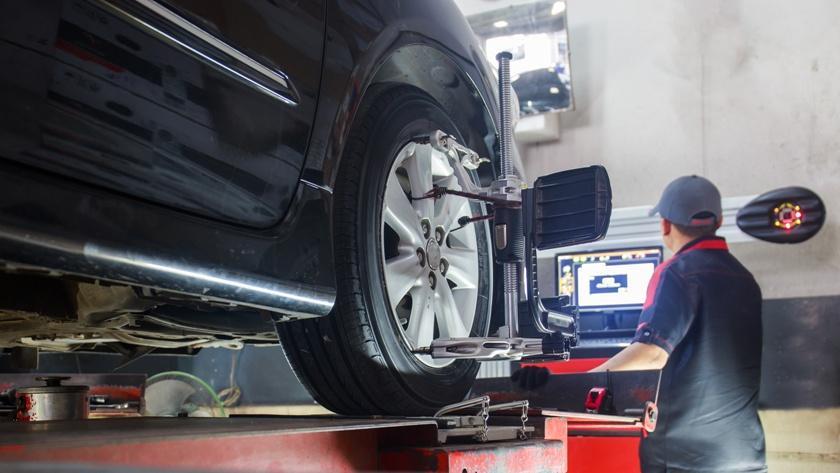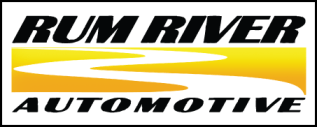Why Wheel Alignment and Balancing is Necessary
Many drivers are not aware that the performance of their vehicle is basically dependent on the condition of their car alignment. Conditions like potholes, railroad tracks, rain, snow, road salt, gravel, dirt and grime, and debris that is seen too late to avoid, can wreak havoc on just about any part of a suspension system. With the proper wheel alignment and tire balancing, your vehicle will provide a smoother and more comfortable ride and steering stability.
It is hard for the average driver to know the difference between alignment and balancing problems. Whether it’s misalignment or a lost tire balance, it will eventually damage your tires, your suspension system, and/or your steering system. Your vehicle will become a safety hazard on the road! This is a hard lesson in understanding why wheel alignment and balancing are necessary.
The signs of a lost wheel alignment or tire balance are similar and could look like the situations described below:
- Vehicle pulling to the left or right
- Uneven or rapid tire wear
- A steering wheel is crooked, it feels “loose,” or vibrates
- Squealing tires, wobbly tires
Tire Balancing: So what does “out of balance” mean and how is it corrected? Imperfections in the rubber or damage to a tire or rim can throw a wheel "out of balance." That means that one section of the tire or rim is heavier. One wheel at a time is removed from the car and placed on a computerized machine that spins around to determine which side of the wheel is the heaviest. A small lead weight is then attached to the tire to counter-balance any heavy spots until the weight is the same on all sides of the wheel.
Car Alignment: What is car alignment? When your car rolled off the assembly line, it came preset with special angles that position your tires correctly so that your vehicle drives in the direction it is pointed. Improper car alignment can cause your tires to wear unevenly and prematurely. It can also negatively affect the overall performance of your vehicle.
Tip to Remember: Have the alignment and balance checked every 5,000 to 6,000 miles, or whenever you purchase new tires. This will help maximize the lifespan of your tires and keep your vehicle driving safely.
If you want to know more why wheel alignment and balancing are necessary, contact our ASE Certified Technicians at Rum River Automotive for more information about our car alignment and balancing services and to schedule an appointment. Since 1997, our auto shop has served vehicle owners in Princeton, MN and in the surrounding areas of Milaca, MN, and Zimmerman, MN.
If you're wondering why wheel alignment and balancing are necessary, schedule an inspection of your car alignment at Rum River Automotive today.
Many drivers are not aware that the performance of their vehicle is basically dependent on the condition of their car alignment. Conditions like potholes, railroad tracks, rain, snow, road salt, gravel, dirt and grime, and debris that is seen too late to avoid, can wreak havoc on just about any part of a suspension system. With the proper wheel alignment and tire balancing, your vehicle will provide a smoother and more comfortable ride and steering stability.
It is hard for the average driver to know the difference between alignment and balancing problems. Whether it’s misalignment or a lost tire balance, it will eventually damage your tires, your suspension system, and/or your steering system. Your vehicle will become a safety hazard on the road! This is a hard lesson in understanding why wheel alignment and balancing are necessary.
The signs of a lost wheel alignment or tire balance are similar and could look like the situations described below:
- Vehicle pulling to the left or right
- Uneven or rapid tire wear
- A steering wheel is crooked, it feels “loose,” or vibrates
- Squealing tires, wobbly tires
Tire Balancing: So what does “out of balance” mean and how is it corrected? Imperfections in the rubber or damage to a tire or rim can throw a wheel "out of balance." That means that one section of the tire or rim is heavier. One wheel at a time is removed from the car and placed on a computerized machine that spins around to determine which side of the wheel is the heaviest. A small lead weight is then attached to the tire to counter-balance any heavy spots until the weight is the same on all sides of the wheel.
Car Alignment: What is car alignment? When your car rolled off the assembly line, it came preset with special angles that position your tires correctly so that your vehicle drives in the direction it is pointed. Improper car alignment can cause your tires to wear unevenly and prematurely. It can also negatively affect the overall performance of your vehicle.
Tip to Remember: Have the alignment and balance checked every 5,000 to 6,000 miles, or whenever you purchase new tires. This will help maximize the lifespan of your tires and keep your vehicle driving safely.
If you want to know more why wheel alignment and balancing are necessary, contact our ASE Certified Technicians at Rum River Automotive for more information about our car alignment and balancing services and to schedule an appointment. Since 1997, our auto shop has served vehicle owners in Princeton, MN and in the surrounding areas of Milaca, MN, and Zimmerman, MN.
